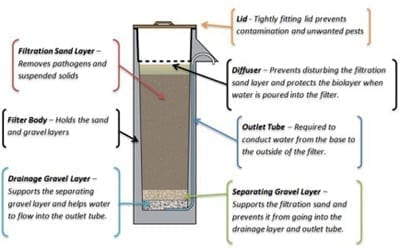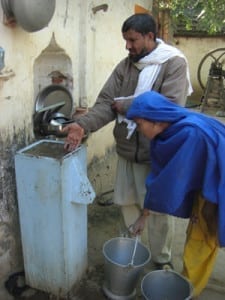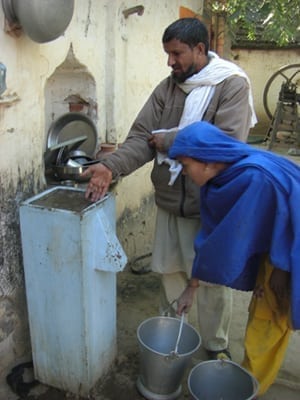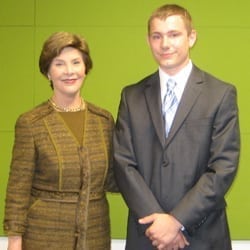
How a biosand filter works. This graphic is from the Centre for Affordable Water and Sanitation Technology (CAWST), a Canadian charity that Kennedy worked with during his month in India.
Part of treating water effectively is simply convincing people that it’s worthwhile. As many as 1.8 million people die each year from diarrhea linked to bad water and sanitation, most of them under age 5, the WHO reports. In some villages in rural India, however, parents don’t know that the drinking water is killing their children. So, they don’t take action.
One solution could be to make posters that advertise the need for filtration. To help spread the public health message, a mechanical engineering undergraduate student at Iowa State University made a month-long visit to India beginning on December 12. Colton Kennedy worked with an Indian organization to develop communication materials to accompany home water filters. Kennedy was the recipient of the Laura W. Bush Traveling Fellowship, which funded the trip, with added support from the business where Kennedy had his summer internship, Pegasus Global Holdings, Inc.
A graphic solution

One of the biosand filters that IRRD is introducing to rural villages. Photo courtesy of Colton Kennedy
Kennedy worked with India’s Institute of Rural Research and Development (IRRD) in Delhi and in small villages in the region. Together, they drew up sketches for wordless posters that depict the life cycle of waterborne microbes, showing how they threaten people and how we can defend ourselves with water treatment.
The IRRD had been trying to introduce biosand filters that allow water to seep slowly through sand and other materials to remove contaminants. Some of the households do not see a need, however, so they have resisted.
Education is improving and the resistance is not universal, Kennedy says. Younger men, especially, understand the hazards of poor water quality. The education campaign is aimed primarily at people in their mid 20s and older who haven’t benefited from the improving schools, Kennedy says.
“We’re working with a base education level, so things that we take for granted as far as education are simply not there,” Kennedy says. In the next few weeks, he plans to finish designing the communications materials and share his experience on a website he will develop. Also, look for his solution on E4C.
How to win a fellowship
The Traveling Fellowship is awarded to American university students who submit a proposal for a proejct that requires travel abroad for four to six weeks. The deadline for the next round is February 4. Please see the fellowship’s site for more information. Before Kennedy sent his application, he contacted past fellowship recipients to ask for tips. He has offered to reciprocate and share advice with new applicants. Those interested can email him at coltonk@iastate.edu
Resources
Laura W. Bush Traveling Fellowship
Institute of Rural Research and Development – IRRD
Appropriate Rural Technology Institute (another organization that Kennedy worked with) – ARTI
Biosand filter information
Crisis, collaboration and change
See a Water Pressures documentary clip showing solutions to water shortages in India (from IRRD’s site).


